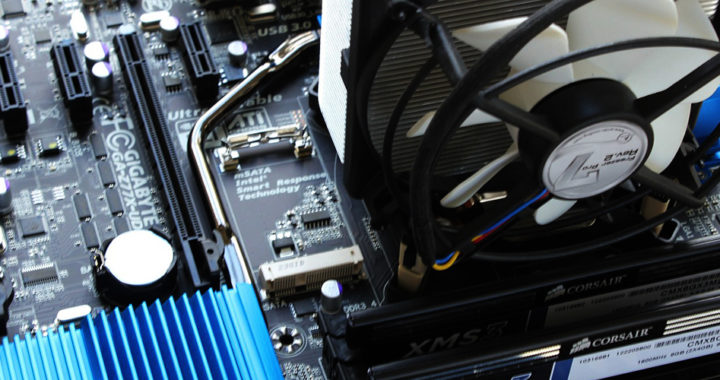One of the two common methods for cooling an electronic system using a liquid is through the use of conventional heat pipes. Note that a heat pipe is specifically a heat-transfer device that works based on the principles of thermal conductivity and phase transition to transfer heat from a source to another solid interface.
To be more specific, heat pipes work by moving heat away from the heat source through a fluid that converts into gas when heated, travels along the pipes to the cold surface, and condenses back into its liquid form as it cools. The fluid travels along the pipe through capillary action, centrifugal force, or gravity. It is essentially a type of a liquid cooling system.
The Pros: Advantages and Benefits of Heat Pipes
A major advantage of heat pipes is that they remain more cost-effective than vapor chamber cooling, thus making them more popular in numerous applications, including the conventional design of hardware components found in most desktop computers.
It is also important to note that a key strength of this cooling method is that it is effective for transferring heat from a heat source to a remote condenser. On the other hand, take note that vapor chambers are more ideal for spreading heat.
The most suitable application of a heat pipe is in low-power situations. To better illustrate, entry-level to mid-level desktop computer would benefit from this system due to its low installation and configuration costs.
Another advantage of heat pipes is that they have better design flexibility when applied to a system with crowded components. Pipes are bendable, and as such, they can be wrapped around different components. The system is ideal for moving heat from a source and to a remote area with a distance of greater than 40 to 50 millimeters.
The bendability of the pipes also means that the system is suitable for design scenarios that require a z-direction or u-direction. Note that vapor chambers have little design flexibility in the z-direction because they are usually a single-piece system while implementing a u-shape design can be impractical from a cost perspective.
The Cons: Disadvantages and Limitations of Heat Pipes
However, with the emerging trend toward vapor chambers driven by market demand and improved manufacturing process, the cost difference between the two cooling systems are becoming slimmer.
Note that heat pipes can also be expensive. Remember that they are more ideal for transferring heat. However, they can also be used for heat spreading by using multiple pipes in close proximity to one another. This configuration can be costlier and more space-consuming than vapor chambers.
Heat pipes are also not ideal for situations that use high power and thus, have high cooling demand. The system would need multiple pipes to solve the thermal challenge, thus resulting in more costs and restricted design options. Vapor chambers are more suitable for high-power situations because they are more efficient.
Another disadvantage of heat pipes is that they are unsuitable for design situations characterized by limited and cramped spaces, such as in the case of laptops and mobile devices. A vapor chamber cooling system is ideal because made into any shape or embossed and placed in direct contact with a heat source such as a CPU or a dedicated GPU.
A Note on the Pros and Cons, As Well as Applications and Limitations
Remember that a heat pipe moves heat while a vapor chamber spreads it. The widely accepted rule is that heat pipes should be used when moving heat away from the source and vapor chambers when spreading it. Heat pipes are ideal for low-power systems with low cooling demands.
Both are sub-types of liquid cooling. Hence, they share unique advantages and disadvantages when compared agains traditional air or fan-based cooling.
An electronics system requires an effective and efficient cooling system to prevent them from overheating and incurring thermal damages. Of course, it is important to understand the cooling demand of a particular electronic system before choosing between the two common cooling methods.
